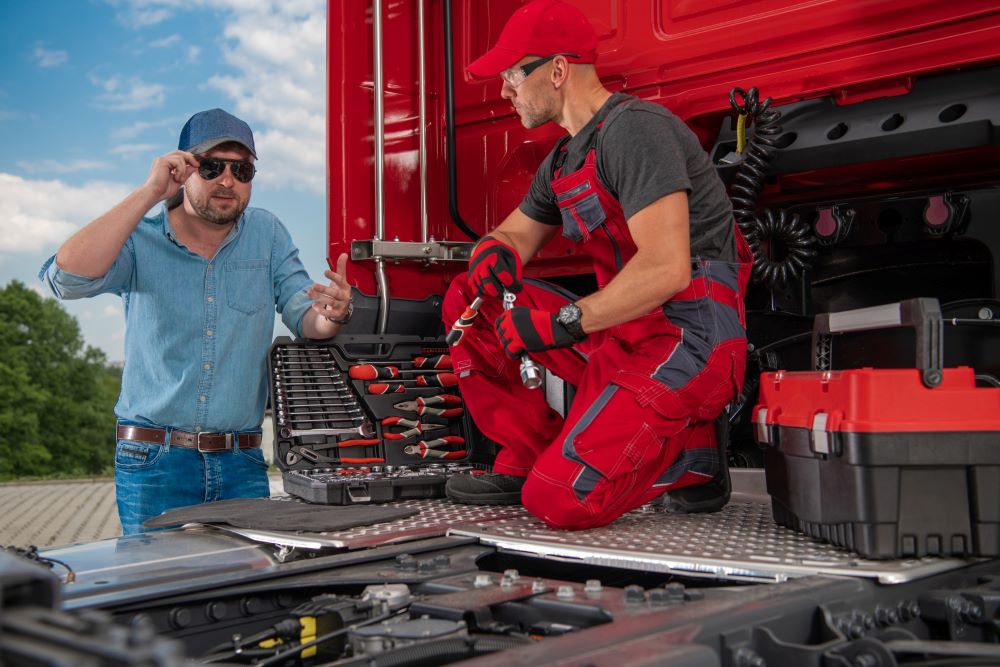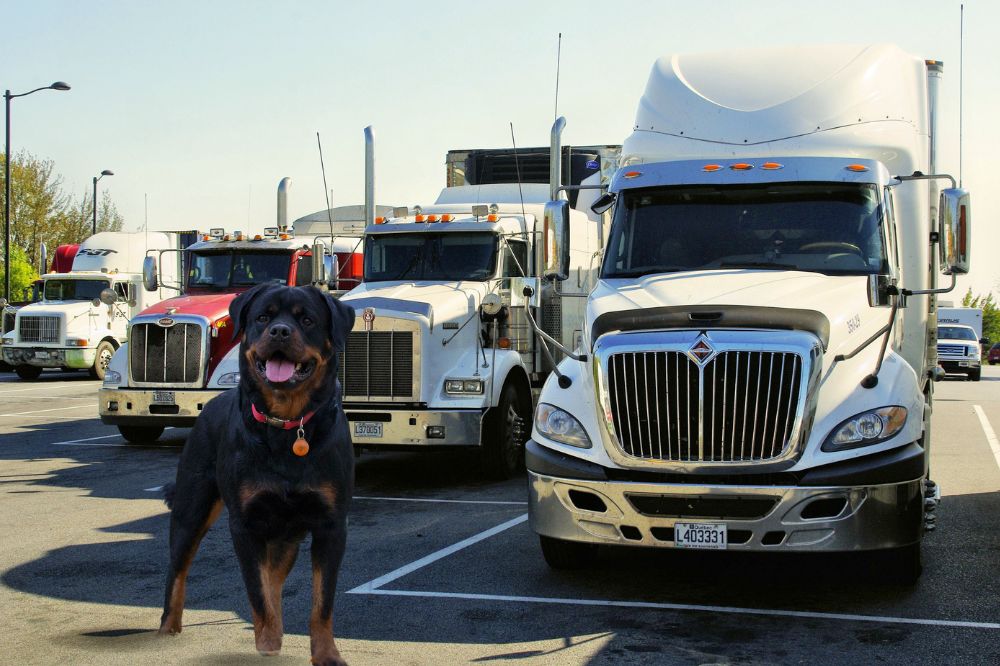
Dashcam privacy concerns for semi truck drivers is a hotly debated topic in the trucking industry. Most fleet managers support dash cams because of their benefits, such as enhancing driver safety and providing insurance advantages.
However, many semi-truck drivers oppose driver-facing cameras, primarily because of privacy concerns. This guide delves into the legal aspects of this debate.
In this article we discuss the legislation regarding dash cameras in semi-trucks, address drivers’ privacy concerns, and examine the pros and cons of using these cameras. We also provide tips for fleet managers on how to address these concerns and comply with relevant laws when implementing driver-facing cameras in their fleet operations.
Are There Laws Against The Use Of Dash Cameras In Trucks?
Installing dash cams in semi-trucks is legal in nearly all states, as there are no specific laws prohibiting the practice. However, individuals have a right to privacy, and there are laws protecting against privacy invasion.
Most regulations regarding driver-facing dash cameras in the transportation industry aim to uphold drivers’ privacy rights and ensure safety. These regulations focus on how the cameras are installed and used.
Dash Cam Laws
Federal laws, like the Electronic Communications Privacy Act, prohibit using dashcams as tools for electronic surveillance and intercepting communications without consent. This means that trucking companies cannot install driver-facing dash cameras without getting a nod from their truck drivers.
Different jurisdictions have varying regulations regarding dashcams, particularly for audio recording. States with all-party consent laws are stricter than those with one-party consent laws.
For instance, in Delaware, everyone in the commercial vehicle, including customers, must consent to audio recording, which may limit driver-facing dash cameras to video only.

Another critical legal factor is the installation of dash cams, which must comply with Federal Motor Carrier Safety Administration (FMCSA) regulations. These regulations state that devices mounted on the windshield must not obstruct the driver’s view. The FMCSA specifies how and where to install these devices, but implementation varies by state.
Some states, like Washington, Nebraska, Montana, New Hampshire, and South Dakota, prohibit mounting dash cams on the windshield, offering alternative locations like the dashboard. Other states have specific size requirements for driver-facing cameras.
Trucking companies should review local laws before installing dash cams to ensure compliance and avoid legal issues.
Driver Privacy Concerns
Several truck drivers are against introducing dash cameras in semi-trucks for three main reasons:
1. Perceived Invasion Of Privacy
Over-the-road (OTR) commercial truck drivers spend more than half the year on the road. To them, their truck isn’t just a vehicle but a second home, and having driver-facing dash cameras constantly monitoring every move they make feels like an intrusion of their personal space.
2. Data Security And Misuse
Another privacy concern for most drivers is data security and misuse. As technology advances, the prevalence of cyber-attacks and data breaches continues to increase. Truckers worry that cyber criminals might access and misuse the volumes of data dash cameras collect, leading to privacy violations.
3. Performance Pressure And Job Loss Fear
Constant surveillance at work increases performance pressure and job loss fears among many drivers. They worry that the dash cameras subject them to nitpicking by fleet owners and other safety managers, and any mistakes the cameras capture might lead to disciplinary action or termination. Prolonged worry can cause stress and anxiety, decreasing truckers’ performance.
Also, some truck drivers interpret the installation of driver-facing cameras as mistrust from their trucking company. This demotivates them, leading to poor performance.

What Is The Purpose Of In-cabin Cameras?
In-cab cameras record the truck’s interior and driver’s actions. The information they offer is helpful for the following purposes:
Pros
- Improving Driver Safety: Some dashcams provide a live feed of a trucker’s actions, allowing safety managers to offer immediate feedback and correct distracted driving and dangerous driving habits. Doing this helps prevent accidents and develops a safety culture within a trucking company.
- Enhancing Driver Training: Driver-facing dash cams are reliable driver coaching aids. Fleet managers can review video footage of poor and safe driving habits to identify training gaps and create targeted training to improve drivers’ performance and safety records.
- Speeding Up Claim Processing: Insurance companies favor fleets with driver-facing dash cams. They offer fast insurance claims processing because the cameras help build a poweful defense against fraudulent claims. Trucking companies using dash cams also qualify for reduced insurance rates because of decreased liability risks.
- Settling Disputes: As video evidence, clear video footage from a dash camera is indispensable when settling disputes after road incidents. It can help establish the facts, leading to driver exoneration from wrongful blame. In doing so, trucking companies protect their reputation and avoid costly settlements.
Cons
Even though dash cameras have significant benefits in the trucking industry, they are not foolproof. A few major drawbacks of using these cameras include:
- Technical issues: Dash cameras can fail to record because of technical glitches
- Lack of context for certain behaviors: A driver-facing camera can capture a trucker’s behavior but fail to capture the external factors that led to the behavior.
- Overreliance on technology: This can undermine the significance of driver intuition, which is essential for responding to changing road situations.

Addressing Driver Concerns
To install driver-facing dash cameras in commercial vehicles legally, fleet managers must address drivers’ concerns while complying with all privacy laws in their jurisdiction. Here are a few tips for alleviating the major truck driver concerns we discussed earlier:
- Define your reasons for using dash cameras and ensure you communicate this clearly to your drivers. Is your goal safety improvements, leveraging insurance claims advantages, or aiding in accident investigations?
- Inform your drivers about how the driver-facing camera in their truck will operate. Will it record only during specific events, like hard braking or lane departures, or continuously in real-time? Be transparent about the camera’s intended use. In nearly all states, it is a legal requirement for drivers to be informed about the cameras and to consent to their use before installation.
- Establish clear guidelines on accessing dashcam footage, data handling, and storage. Who will gain access to the data? How long will the data be stored, and what process will you follow to delete footage once the storage period elapses? Robust data management policies will help alleviate drivers’ concerns about data security and misuse.
- Assure drivers of their job security by clarifying that the driver-facing cameras aren’t for capturing their mistakes and penalizing them for every error so they don’t have to work under pressure. Or get stressed over their performance. It will help to create an understanding and compassionate work environment.
Final Thoughts
Most semi-truck drivers’ privacy concerns with dash cams focus on privacy and the safety of their data and jobs. As a fleet manager, you can leverage all the benefits of dash camera usage by respecting your drivers’ concerns, fostering open dialogue about the device’s use, and implementing strict policies to protect your driver’s data and privacy.
Remember to review and update your policies regularly to factor in any changes in state privacy laws so your policies remain effective. Also, ensure you seek your driver’s feedback on any changes and consider their input before making any updates. It helps promote transparency and build trust with drivers. Both are essential for integrating dash cameras into your fleet effectively.
For more practical insights on navigating the trucking industry, visit our blog. You can also reach out to us if you want to expand your fleet. We offer customized commercial vehicle loans for both new and used truck purchases























